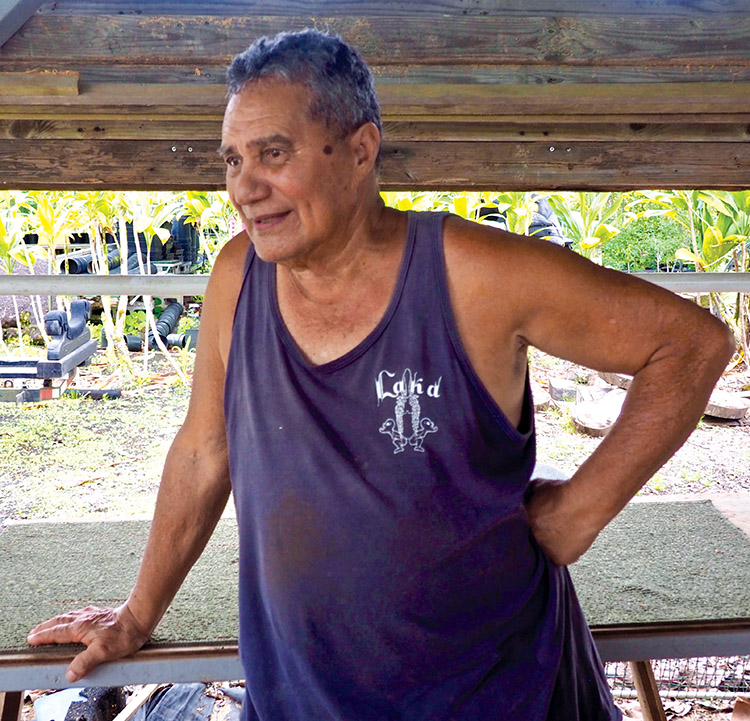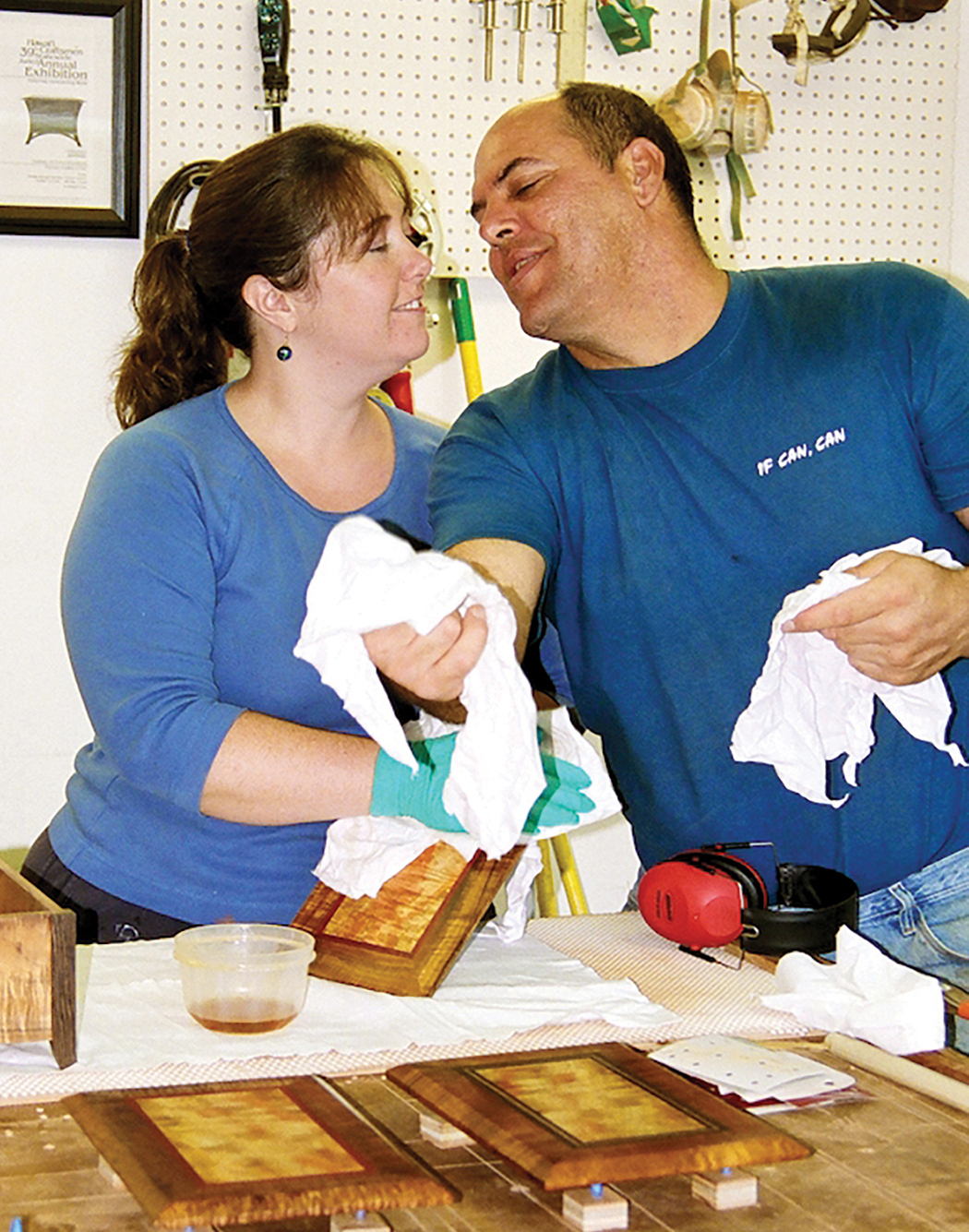
Woodworking: A Love Story
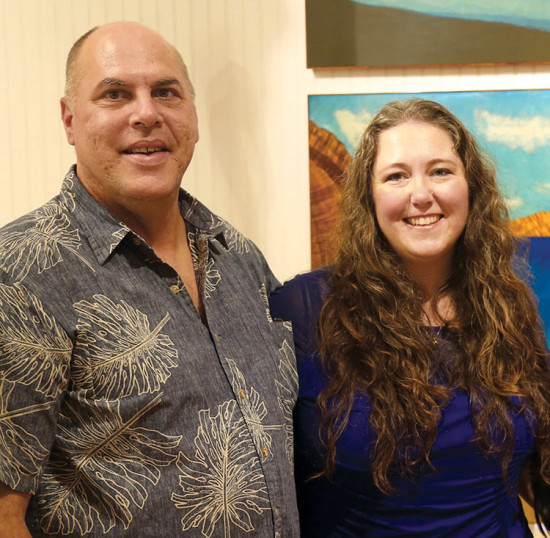
By Catherine Tarleton
Award-winning wood artist Timothy Shafto is part artist, part engineer, and part impresario. A stonemason by trade and self-taught woodworker, Tim presently paints—pours, actually—large epoxy, sand, and wood wall art, using special techniques he has developed over the years.
His work can be seen at Tiffanyʻs Art Agency in Hāwi, owned and managed by Tim and his wife Tiffany DeEtte Shafto. The two make a creative team of owner-operators. “I’m head-down in the studio. I just want to create,” says award-winning wood artist Timothy Shafto. “I’m very lucky to have Tiffany.”
Tiffany, a woodworker herself, feels just as fortunate to have Tim, his art, and his help with the heavy lifting. She doesn’t have much time for the wood shop these days, as she manages the art collective. Tim and Tiffany work closely with more than 20 artists to help them tell their many and varied stories.
The Shaftos’ story starts in the San Francisco Bay area, where Tim was one of the partners in a stone fabrication company where Tiffany worked. With a BA in interior design, Tiffany eventually moved into construction management where she helped transform her clients’ houses into artful homes.
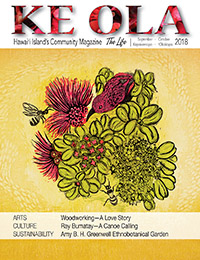
When the company was sold, Tim, who had long wanted to get into woodworking, bought tools and set up shop. He and Tiffany married, honeymooned on Kaua‘i, and fell in love again—with Hawai‘i. They returned to live on Kauai in 2004, and made a living by remodeling and flipping homes.
By that time, Tiffany had been drawn into the art studio, thanks to Tim and a junior high school wood shop class. They teamed up on collaborative woodworks that got better and better with each beautiful platter or fine wood jewelry box.
“We knew we were on the right track with the boxes because they won awards in the first two shows that we entered,” says Tim. In 2006, they received the Award of Excellence in Hawai‘i Craftsmen’s Annual Statewide Juried Exhibition.
The next year, they visited Hawai‘i Island and fell in love again. They scheduled a pre-dawn meeting with the sawyer who provided their koa wood, and embarked on a four-wheel-drive trek up mauka (mountain side). Beyond the forest, they entered a clearing—a century-old cattle pasture—where they had permission to reclaim dead or fallen trees. Logs were cut and milled on site, and afterward, the crew scarified the soil to help facilitate new koa growth. Tim and Tiffany were captivated; they felt a deep connection to the wood at its source, and not long afterward moved to North Kohala.
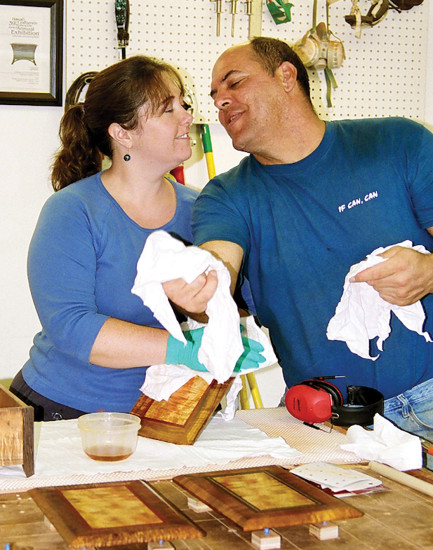
“Here, we were embraced by the incredible woodworking community in a way we never dreamed,” Tiffany said. That community included master woodworker and calabash-maker Dan DeLuz in Waimea, who gave Tim his first lesson in woodturning. Tim also apprenticed with master wood turner Elmer Adams. Both of these mentors, Tim says, changed his life.
Tim’s work continued to evolve to the next level. “I started with platters made of wood and epoxy turned on a lathe,” says Tim. He also learned to make wooden vessels, sculptures, and giant koa calabashes. “I began doing it with tables, then moved on to the wall art.” Learning new techniques and developing his own along the way, Tim’s wall art became his new passion.
“I wanted to play with painting,” he says. “But the workability—you have to work so quick. I started playing around with epoxy and colorflow painting [pouring color instead of applying with a brush]. Then I started incorporating wood and sand and creating landscapes.”
His work begins at the source. “I start with logs. I cut them myself with a chainsaw so I can have a chance to handle the wood. Then I mill it with a band saw.” He gestures to a series of rolling hills on his work, Sunrise. Tim says, “I work with the grains, like these hills. This part comes from the crotch of the tree. You never know till you open it up. Sometimes, whoa.”
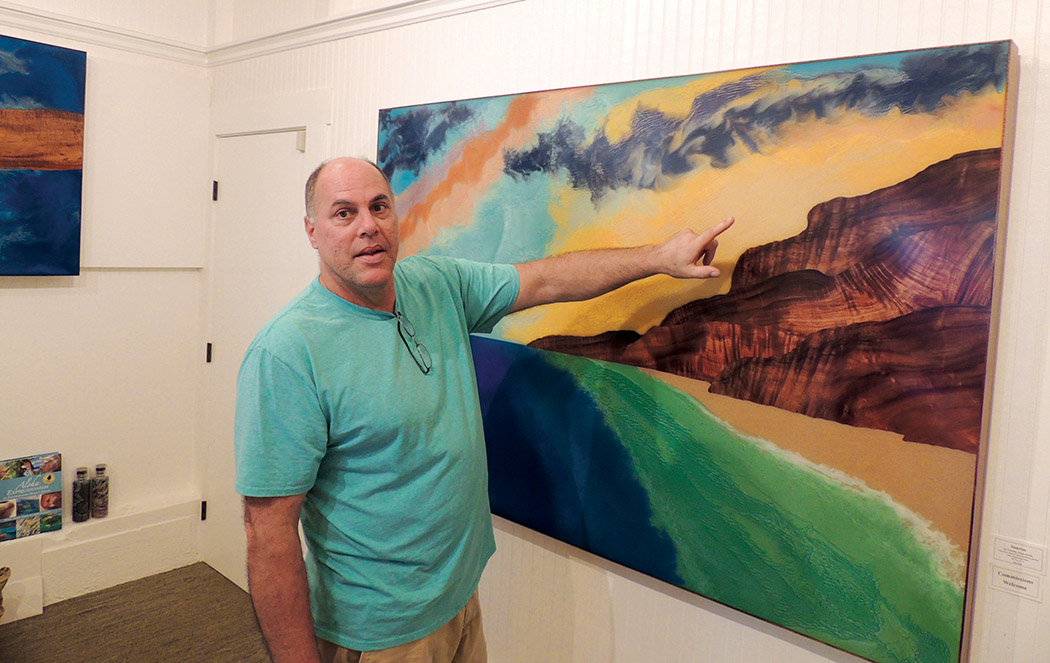
After the wood—usually koa or mango—is planed, and he sees its character, Tim will make a drawing and scale it up to the large size he loves to create. Very thin wood slices are laid in jigsaw-puzzle-style for landforms, and fine sand (which he purchases, never takes from the beach) is applied to shoreline areas.
Before he can pour in the expoy resin ocean, he has to build a special “canvas” for the finished work. “I engineered my own panels,” says Tim. “Plywood warps. Plywood forms tension as it dries, and I need to keep this as flat as possible. My panels are actually torsion boxes with a grid system inside. They’re made of wood product and ‘secret ingredients.’”
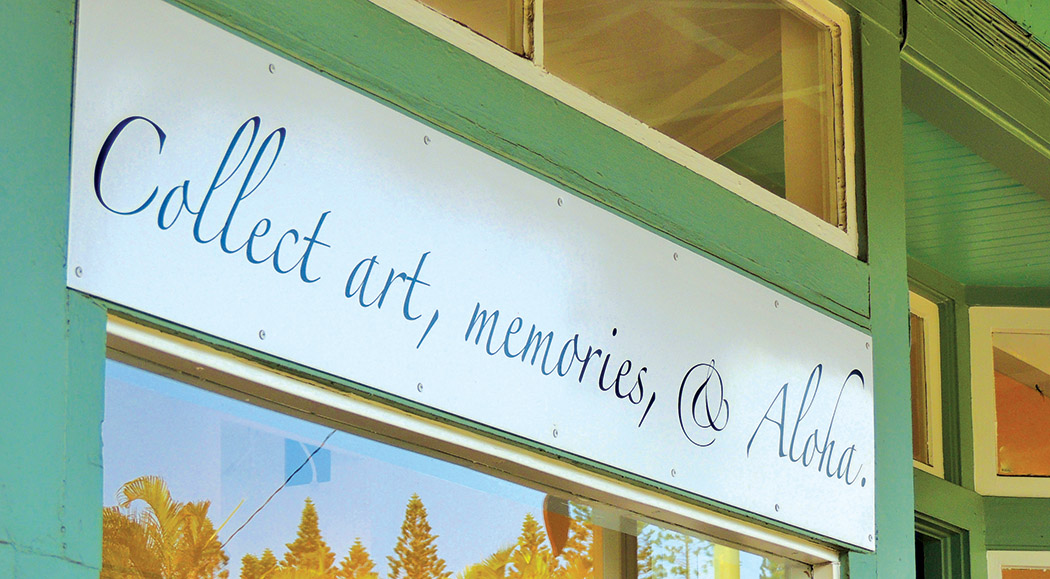
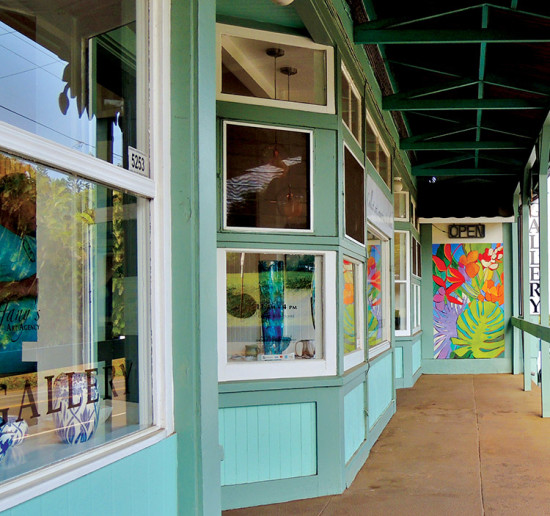
He then—with a magician’s hand—pours liquid epoxy and color pigments where he wants them to go, pouring the ocean up to the shore. “Pigments don’t mix; they are suspended in the epoxy, which gives them a chance to migrate,” Tim says. “Temperature is a factor, too. The hotter it is, the faster it’s going to dry.” After that, the work is hand-sanded to a gleaming finish.
Success is never guaranteed, no matter how painstaking the process. “It’s about 90% you and 10% chance,” Tim says. “I can generally get the colors where I want them; but they migrate, and there’s a chance they’re going to do what they’re going to do.”
How long did it take him to learn his techniques? “It’s taken all my life!” Tim says. “Everything I learned before, all these individual things that you do lead in to what you’re doing now … I love this because it’s a journey in forming your own style, creating my own path, really.”
Tim says his ideal project would be a big one. “A very large piece, one that starts at floor and goes up,” he says, gesturing toward the ceiling. “Something you could walk right up to and feel like you’re stepping into it … I’d hope people feel like they’ve actually been there before, or it’s a place they’d love to visit.”
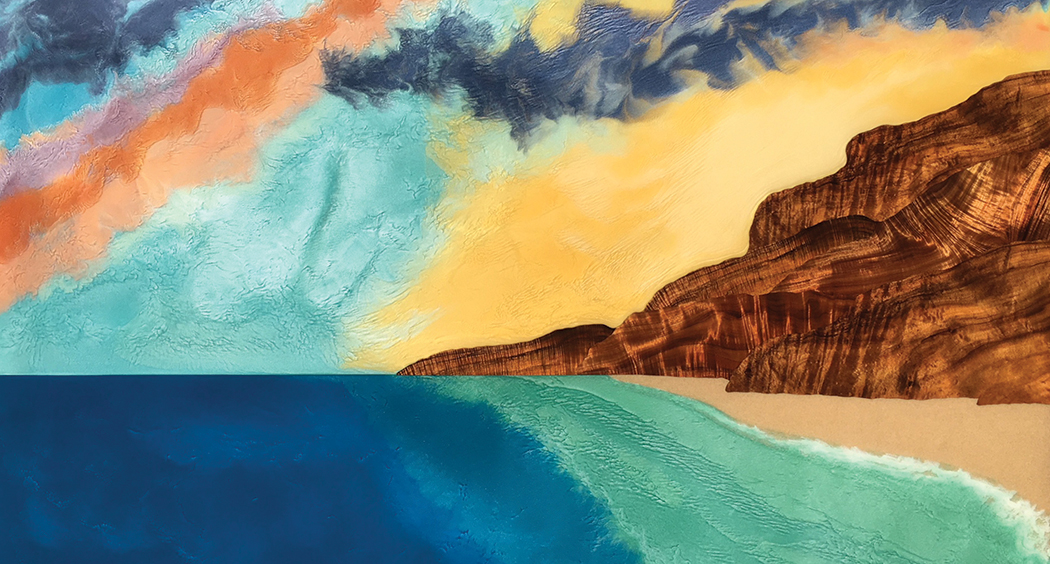
“With my stuff, it’s something they’ve never seen before,” says Tim. His sense is that collectors want art that speaks to them personally. “Being able to transform a thought, an idea, into physical form through my hands gives me such joy. But that’s only half the cycle,” Tim says. “When you experience a piece of my work that brings you joy, and you buy it, you are buying a moment in my life and allowing me to continue creating.”
“The reason artists are called to create is because their works are meant to make someone happy, and that’s the best part of our human experience,” Tiffany says. ❖
All photos courtesy of Tiffanyʻs Art Agency
For more information: timothyallanshafto.com
Mahalo BMW of Hawaii – Art Story Sponsor
